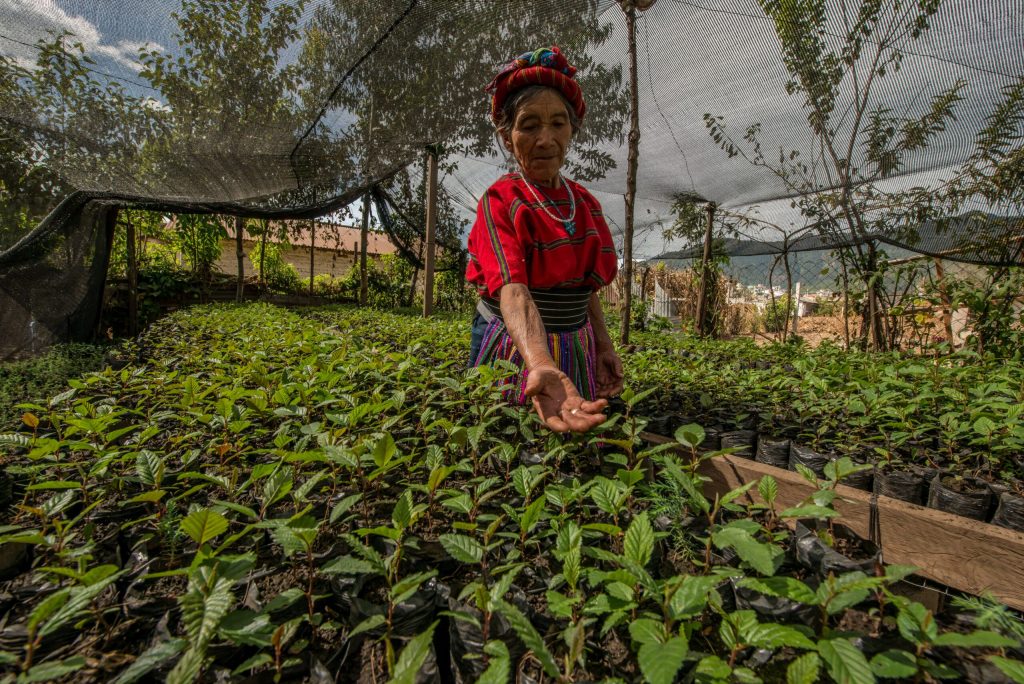The Indigenous Roots of Regenerative Agriculture
4 min read
While a new wave of enthusiasm has crested in recent years, regenerative agriculture is an ancient concept that originated with Indigenous peoples around the world more than a thousand years ago. In many Indigenous world views, humans and nature are not separate forces, but parts of a whole that need each other to thrive. Regenerative agriculture supports this by promoting farming methods that enrich the land—so it can continue to provide for present and future generations.
Embracing traditional knowledge
Due to the long and horrific history of stolen land and colonization, the Global North often refers to Indigenous peoples’ culture and knowledge in the past tense. Yet today, Indigenous peoples are indisputably the best guardians of our world’s most precious ecosystems. When you take into account that the few remaining Indigenous lands are home to 80 percent of the world’s biodiversity, while modern industrial agriculture is responsible for 80 percent of global deforestation, it’s clear that Western society still desperately needs to learn what Indigenous people have known for millennia: that human beings must live in a reciprocal relationship with the Earth.
“I envision a time when the intellectual monoculture of science will be replaced with a polyculture of complementary knowledges. And so all may be fed.”
– Robin Wall Kimmerer, Braiding Sweetgrass
Around the world, Indigenous peoples have long practiced the key elements of regenerative agriculture. Here are just a few examples:
The art of agroforestry
Some Indigenous communities, like the Lenca people in Honduras, know agroforestry simply as “traditional technique.” Agroforestry—or the concept of growing crops in a way that mimics the forest and offers shade, protection, and nutrients—is such common practice there is no special name for it.
Our lead for sustainable forest management, Emmanuelle Bérenger, explains the importance of Indigenous growing methods: “By using sustainable practices taught from one generation to another, [Indigenous peoples] actively safeguard forests, preserving biodiversity and keeping a delicate balance essential for both the environment and their own sustenance.”
Intercropping ingenuity
Much of modern agriculture relies on monoculture, where just one single crop is grown across vast sprawling fields. While industrial farmers see this as a more efficient and simplified way to farm, it also depletes the soil of nutrients, creating a greater need for chemical fertilizers, and increases outbreaks of pests and disease. Instead, Indigenous peoples have long practiced polyculture, where many different types of crops are grown alongside each other.
The Maya people traditionally practiced a polyculture technique called milpa, a method of intercropping plants like maize, beans, and squash. It works like this: maize grows tall and acts as a trellis for the climbing bean vines, while the squash leaves spread along the ground to suppress competing weeds. Grown together on mounds of soil, milpa helps regulate soil moisture and deter pests. It also increases biodiversity by encouraging a symbiotic relationship between the plants, soil microorganisms, insects, and animals. This technique has traveled far and wide from its origination in Mesoamerica; in other parts of the North America, it’s commonly known as the Three Sisters method.
Wisdom in water management
In the Rainforest Alliance’s Regenerative Coffee Scorecard, we highlight the importance of conserving local watersheds (an interconnected network of rivers and streams). Farmers can do this in a regenerative way by planting or caring for trees and natural vegetation around waterways and reducing water use when possible.
In many parts of the world, like India, Indigenous communities recognize sacred groves, forests, and pools to protect biodiversity and conserve areas of cultural importance.
Additionally, in the trans-Himalayan region of India, Indigenous people use methods like water storage ponds and complex irrigation systems to sustainably manage water. Because they understand the importance of proper water harvesting for the entire community, they come together to care for their water as a shared resource.
Harnessing our alliance for Indigenous rights
Moving forward, the agriculture industry should give authority to both Indigenous and modern scientific knowledge. The Rainforest Alliance is proud of our commitment to innovation in sustainable and regenerative agriculture, and it is our priority to partner with and learn from Indigenous peoples who have been doing it for millennia.
We work to strengthen Indigenous-led rural enterprises by connecting our partner communities to financial support and global markets. For example, our Peru team works with the Warmi Awadora, a group of Kichwa women weavers, to strengthen and support their entrepreneurial skills. And through the Dedicated Grant Mechanism for Indigenous Peoples and Local Communities program in Mexico, we support Indigenous leadership on project design and accesses to financing that helps create and grow sustainable farm and forestry businesses.
Collectively, we—NGOs, governments, companies, and individuals—should do all we can to champion Indigenous voices and rights—especially their land rights. If the rising popularity of regenerative agriculture marks a shift in how the world grows food, then Indigenous peoples must be at the center.





